
Energy and Water
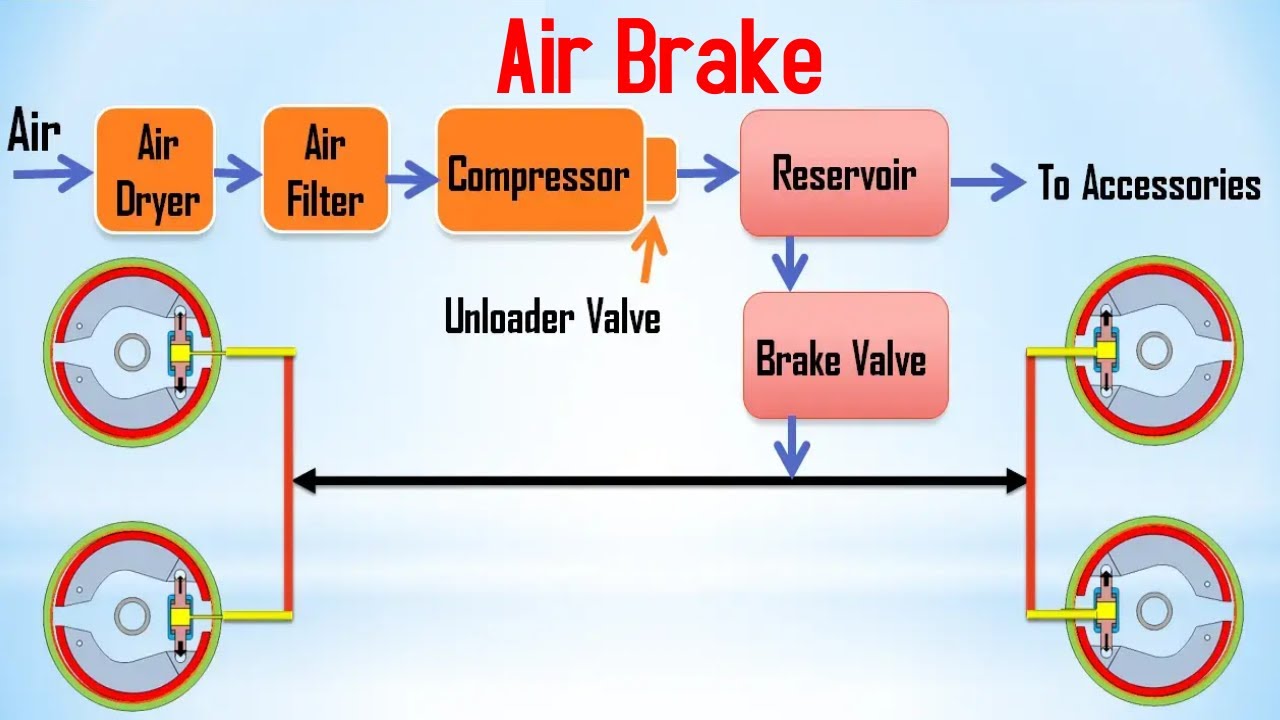
Thermal Air Braking
This paper introduces the concept of thermal air braking, which involves heating a portion of the airfoil's upper surface to achieve the braking effect. A 2D Computational Fluid Dynamics (CFD) analysis is conducted using ANSYS Fluent software to study the impact of heating the upper back portion of the top surface of an airfoil. The study compares the results of the heated and non-heated cases for NACA 4415. Different aerodynamic efficiencies are investigated, such as lift coefficient (CL), drag coefficient (CD), lift-to-drag coefficient (CL/CD), and pressure coefficient (CP). The results are
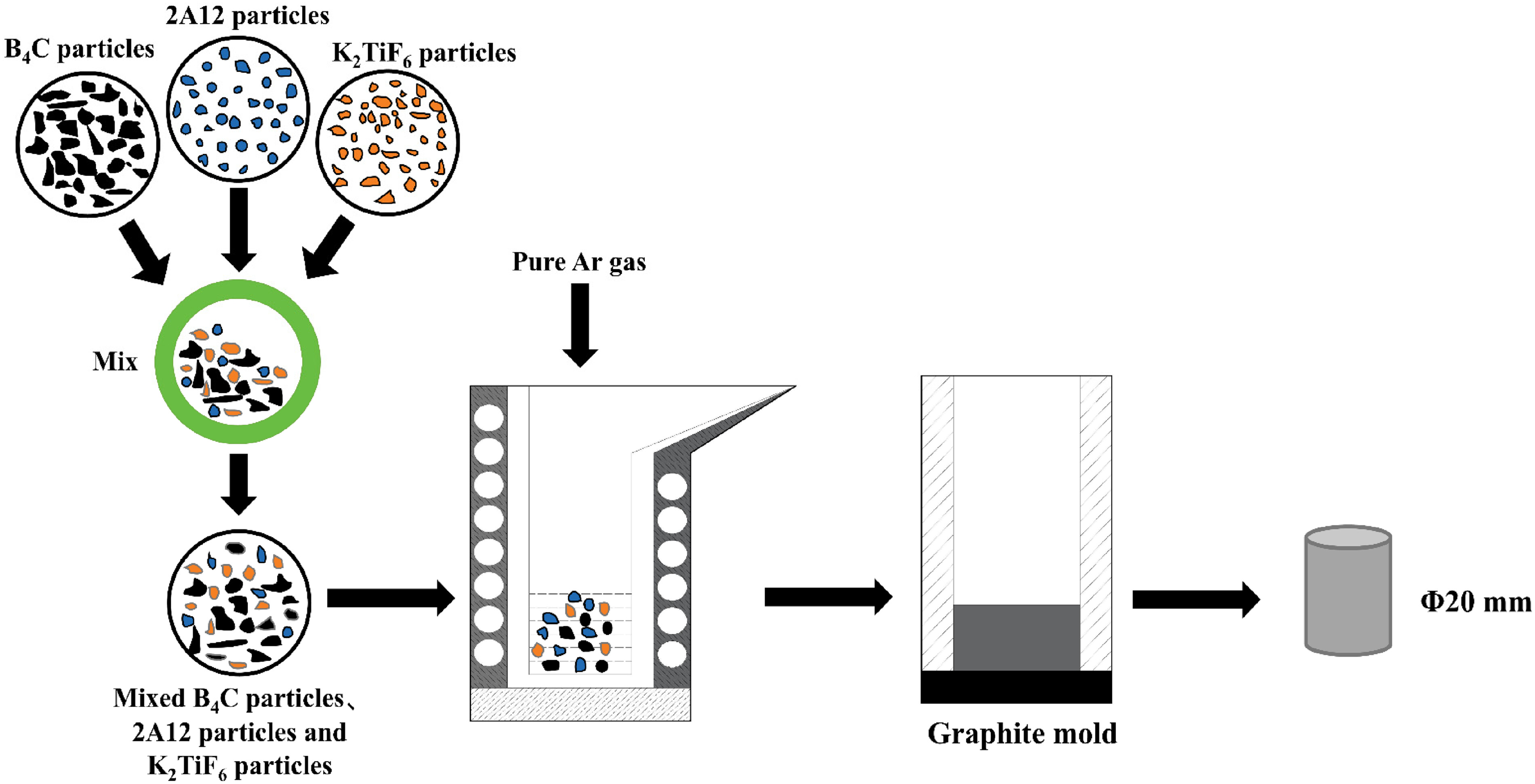
Study on the microstructure, mechanical and corrosion behaviors of 2A12 Al matrix composites containing B4C and 50% K2TiF6 flux
This study presents an innovative exploration into the development and characterization of boron carbide (B4C) reinforced aluminum (Al) metal matrix composites (AMMCs), specifically focusing on the 2A12 Al alloy. Utilizing a cutting-edge vacuum induction melting process, the research investigates the effects of varying B4C particle concentrations in conjunction with 50% K2TiF6 flux additions. This novel approach aims to enhance the microstructural integrity, mechanical properties, and corrosion resistance of the AMMCs. The research unveils a significant improvement in microhardness and tensile
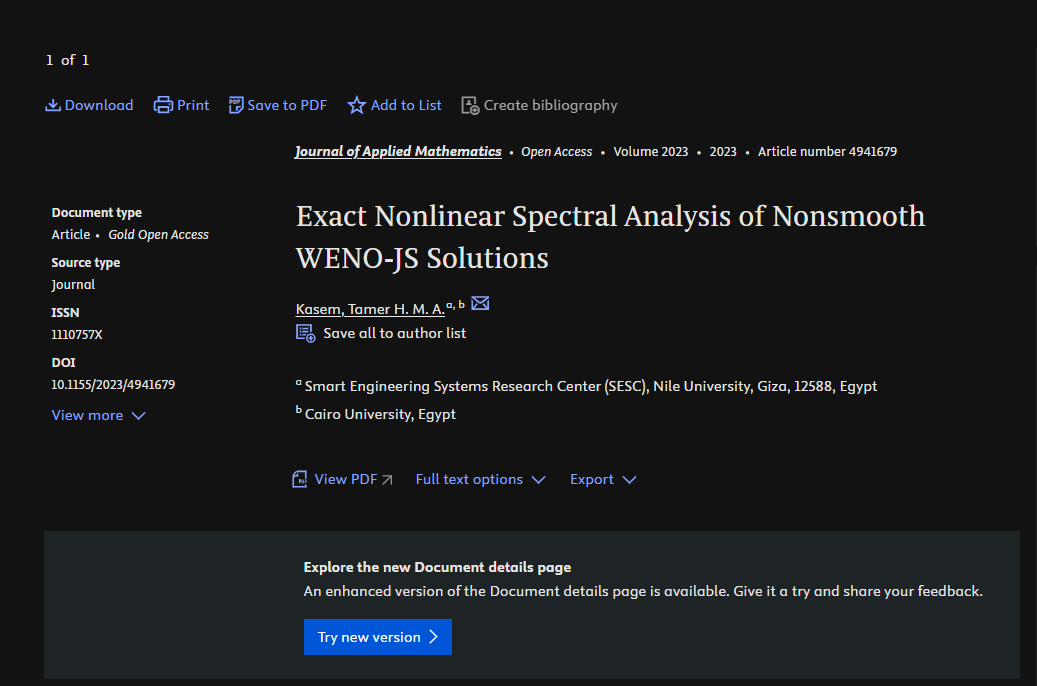
Exact Nonlinear Spectral Analysis of Nonsmooth WENO-JS Solutions
The fifth-order accurate Weighted Essentially Nonoscillatory space discretization developed by Jiang and Shu (WENO-JS) is studied theoretically. An exact Nonlinear Spectral Method (NSM) is developed based on an innovative yet simple methodology. The NSM explains the behaviour of nonsmooth solutions because it is valid for arbitrary modified wave numbers (MWN). The NSM clarifies the effects of the time integration methods and the Courant number. The mode isolation assumption, extensively used to analyse WENO-JS, is elucidated, and several novel findings are presented. The improved performance
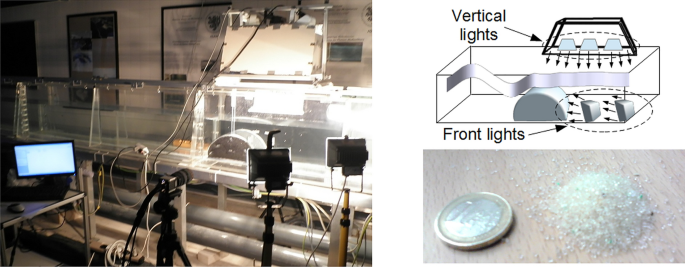
Numerical simulation and PIV measurements of the wave-induced flow field near semi-circular breakwaters
Abstract: Careful design of the high-tech semi-circular breakwaters (SBW), which are used for protection against sea waves, is essential to avoid the failure of these large-scale projects. An improved design tool adopting numerical simulations, complemented with experimental measurements is introduced. Unstructured boundary-fitted grids are used to model the curved SBW boundary accurately and resolve the flow adjacent to it. Experimental measurements based on Particle Image Velocimetry (PIV) are introduced and the numerically simulated velocity fields are validated. For the first time, the
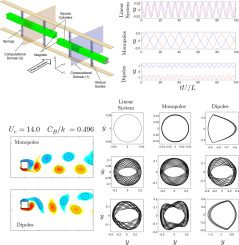
Influence of magnetically-induced nonlinear added stiffness on the lift galloping of square cylinders at low Reynolds number
A square cylinder may gallop if subjected to fluid flow, experiencing a self-excited vibration mode that can harvest energy for low-power applications. The harvested power is typically low and depends on the upstream flow velocity and system dynamic parameters. In this study, the influence of nonlinear stiffness induced by two repulsive magnetic poles on the galloping response of square rods is investigated at a mass ratio of 10 and a Reynolds number of 200. The vibration response of two identical coaxial square rods with magnetic poles attached to their opposite ends is analyzed. Two
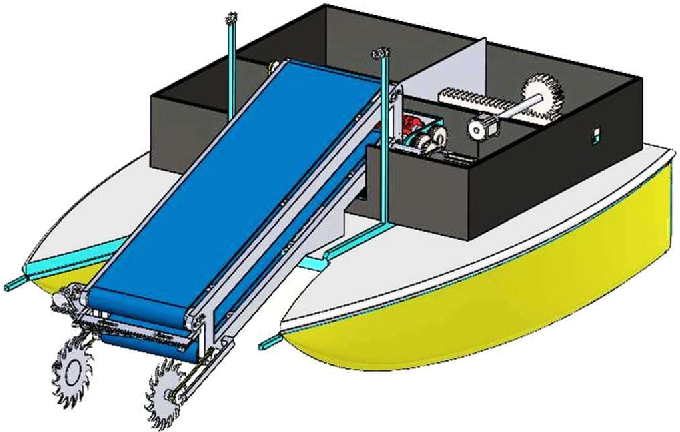
Developing a Floating Robot for Mechanical Control of Water Hyacinth
Water hyacinth has become widespread in freshwater bodies in several countries, leading to various issues, particularly its substantial water consumption and the resulting need to control its growth. Among the different methods of controlling water hyacinth, mechanical control stands out as the most effective and environmentally friendly approach. A proposed harvester robot has been developed, capable of efficiently cutting and collecting water hyacinth from the water's surface. The robot boasts several advantages, including its ability to operate in narrow water paths and lakes, use clean

High-Entropy Alloys: Design, Manufacturing, and Emerging Applications
High-Entropy Alloys: Design, Manufacturing, and Emerging Applications presents cutting-edge advances in the field of these materials, covering their mechanics, methods of manufacturing, and applications, all while emphasizing the link between their structure/microstructure and functional properties. The book starts with a section on the fundamentals of high-entropy alloys (HEAs), with chapters discussing their thermodynamics, subgroups (transition metal; refractory; ceramics; metallic glasses and more), physical metallurgy, and microstructural characterization. The next section features
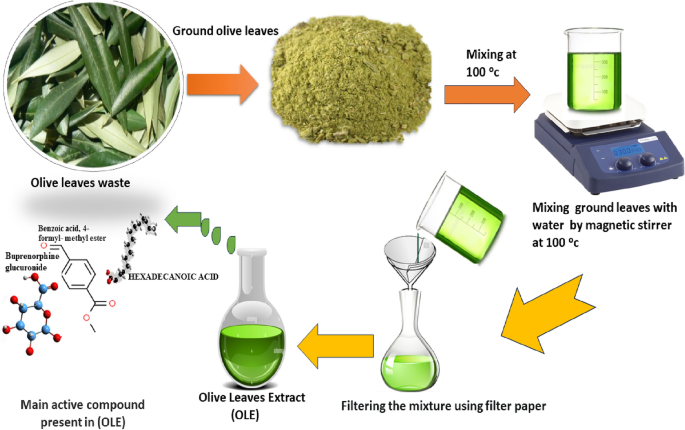
Investigation of olive leaf extract as a potential environmentally-friendly corrosion inhibitor for carbon steel
Corrosion constitutes a significant issue in industries that handle metals. Corrosion inhibitors with a low impact on the environment provide a significant economic benefit in various engineering applications. In this work, the effectiveness of olive leaves extract is evaluated as a cost-effective and environmentally-friendly corrosion inhibitor. The corrosion of carbon steel in different concentrations of hydrochloric acid (0.1, 1.0, and 2.0 M) when protected by an aqueous solution of olive leaf extract of concentrations ranging from 10 to 60 ppm is investigated. A green extraction process
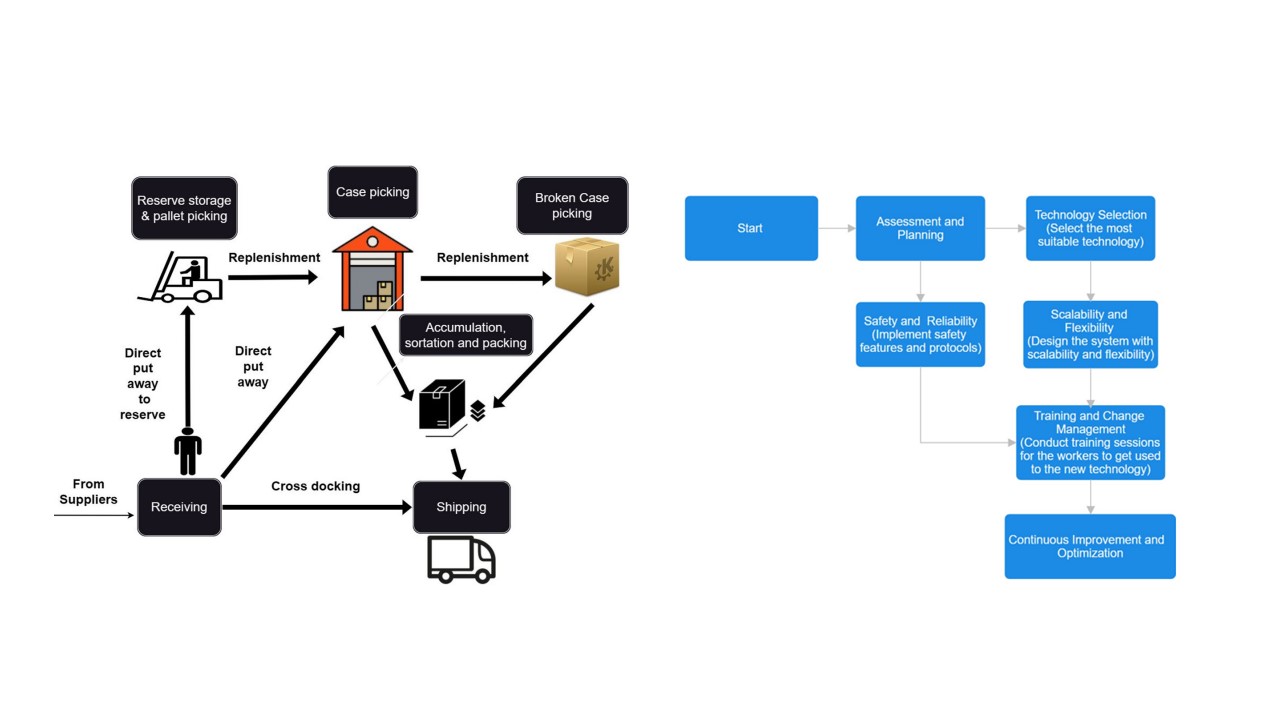
AGV and Industry 4.0 in warehouses: a comprehensive analysis of existing literature and an innovative framework for flexible automation
The just-in-time concept, mass customization, omnichannel distribution, and the rising global population have all fueled the logistics sector. Consequently, using automation inside the warehouses to make them more dynamic and sustainable for the future is one of the crucial components to adapt to this quick shift. Giants in the industry and technology are becoming more interested in the “smart warehouse” system, built with innovative warehousing technologies, as an achievable solution for the development of warehouses in the future. To contextualize the past and provide light on prospective
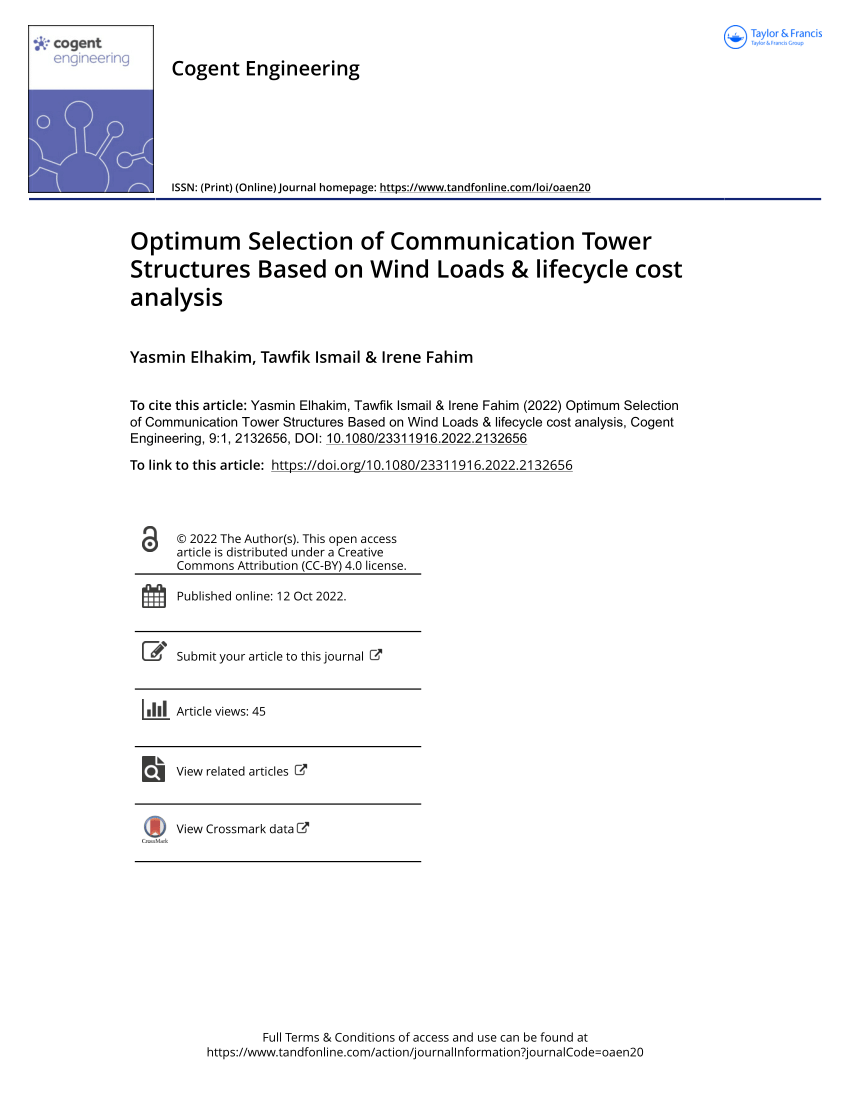
Optimum Selection of Communication Tower Structures Based on Wind Loads & lifecycle cost analysis
Communication towers are vital assets in our daily lives as they transfer signals between cell phones facilitating communication and commerce among people and businesses all around the world. Wind loads are crucial in the communication towers design since they are tall and slender. With climate change bringing more storms and higher wind speeds, it is more crucial to research the finest tower structure that withstands such conditions with the least life cycle cost. Therefore, in this paper, a comparative case study is performed between 45 m height lattice tower and monopole tower in Egypt. Two